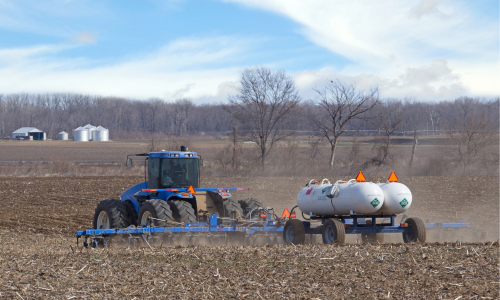A November 2009 report from the Organic Center, Impacts of Genetically Engineered Crops on Pesticide Use in the United States: The First Thirteen Years, shows a dramatic rise in the use of glyphosate weed killers (herbicides) on genetically engineered (GE) crops. The Union of Concerned Scientists (UCS) and five other NGOs funded this work.
Using a model developed to assess the overall impact of GE crops on pesticide use, report author and Organic Center chief scientist Dr. Charles Benbrook determined that 383 million additional pounds of herbicides have been used on GE crops since 1996, compared to what likely would have been used if GE crops had been replaced by conventional, non-GE varieties. Forty-six percent of the total increase occurred in the last two years studied (2007 and 2008).
Drawing upon U.S. Department of Agriculture (USDA) data, Dr. Benbrook shows that this huge increase in glyphosate herbicide use swamps the decrease in insecticide use attributable to GE corn and cotton, making the overall chemical footprint of today’s GE crops decidedly negative. The report identifies the primary cause of the increase—the emergence of glyphosate-resistant weeds due to the increased use of glyphosate on the widely planted GE glyphosate-tolerant soybeans, corn, and cotton. As a consequence, weed control is now widely acknowledged as a serious management problem, particularly in the Southeast but increasingly so across the heartland.
Today’s report calls into question the biotechnology industry’s assertions that GE crops have reduced pesticide use. Just a few months ago, UCS released a report, Failure to Yield, which faulted the industry for yet another misleading claim, that of increased yield. Failure to Yield found that GE crops have largely failed to increase crop yield, despite 20 years of research and 13 years of commercialization.
Assessments like these of the performance of GE crops, while valuable in correcting the excesses of industry advertising, are also about the future direction of agriculture.
According to its advertising campaigns, the biotechnology industry promises to solve the twin challenges of climate change and burgeoning world population, just as it once promised to reduce agriculture’s chemical impact. Before embracing GE crops as a solution to these new challenges, independent data-driven appraisals of its record on earlier pledges are needed. Yet, the USDA has been essentially silent on the impacts of GE crops on pesticide use for almost a decade. This is why UCS and other NGOs commissioned this study by Dr. Benbrook.
We hope that these reports, and others like them, will help trigger new government and academic assessments of the performance, costs, and risks associated with today’s GE crops. Without such assessments, American agriculture is likely to continue down the road preferred by the biotechnology industry, a path that promises to maximize their profits but ignores existing, promising, and often lower-cost alternative solutions.



